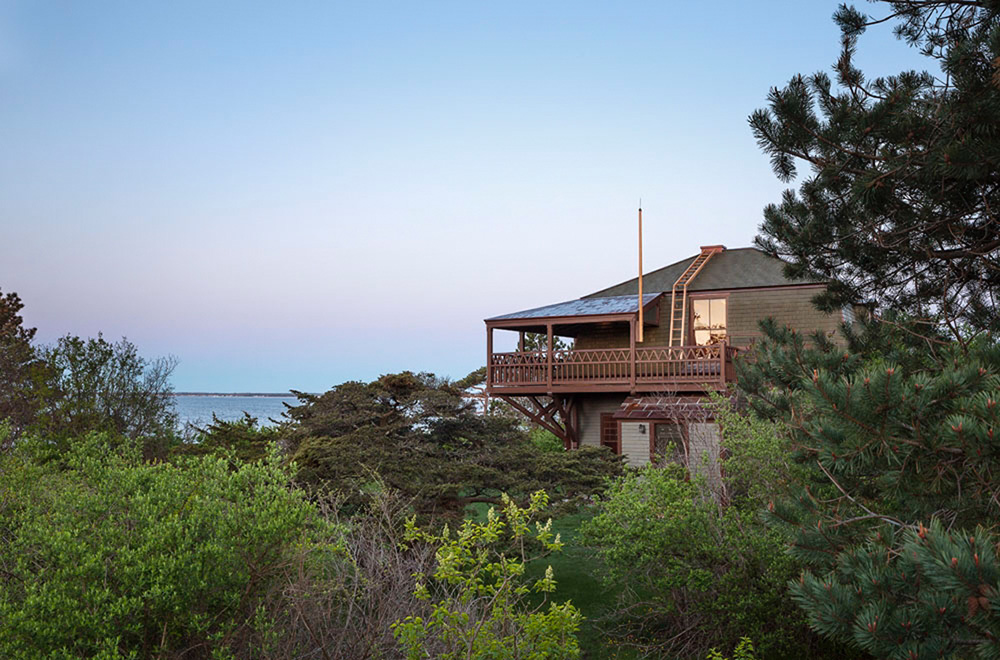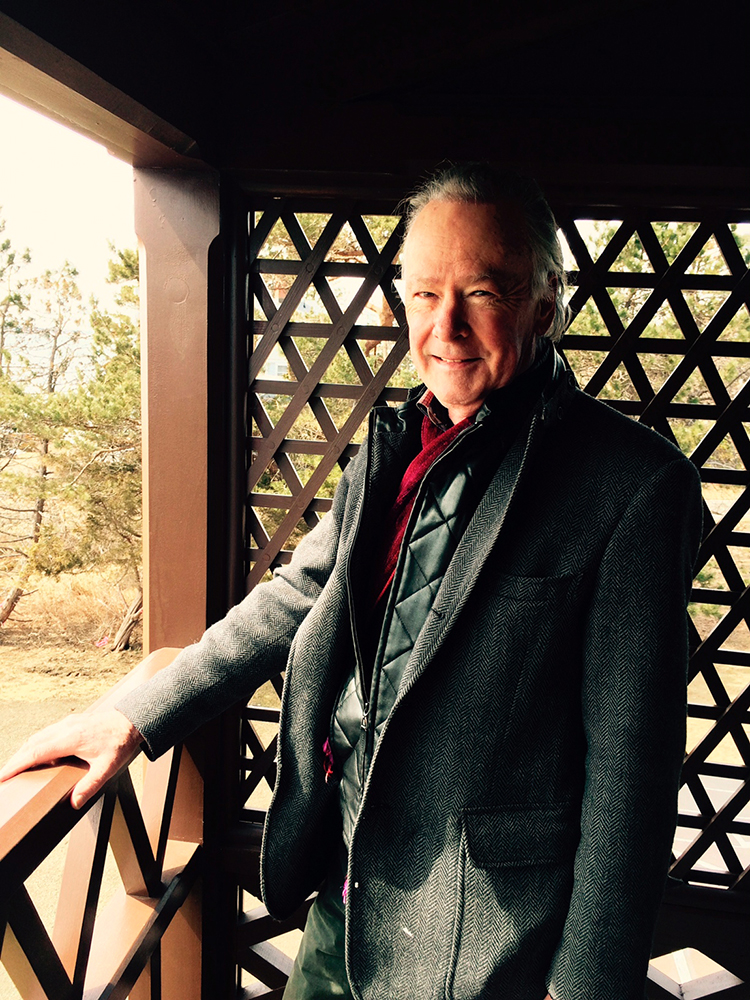
The Winslow Homer Studio has a great view of the water, an attribute Winslow Homer put to full advantage in his paintings.
(Image Below) Dr Daniel E. O’Leary, former director of the Portland Museum of Art, was given an exclusive opportunity for private access to the Winslow Homer Studio, spending two weeks at the studio this spring in Homer’s private world to study and to write a book about Homer and the history of his work in Maine. Dr O’Leary led the museum from 1993 to 2006 and launched efforts to acquire the Winslow Homer Studio, restore it to its original condition and build an endowment to preserve its future. He is currently CEO of the Quimby Family Foundation in Portland, Maine.
When did you first become interested in studying Winslow Homer and why?
Winslow Homer’s extraordinary achievements in Maine naturally hold a great deal of interest for anyone involved in out state’s cultural history. During the 14 years that I served as the director of the Portland Museum of Art, I was of course intrigued with the museum’s fine collection of Homer oils, watercolors and prints. I also was fortunate to befriend Chip Willauer, Homer’s great-grandnephew, and to spend time with him and his family at the Homer Studio. That friendship grew into a six-year discussion and later a negotiation over purchasing the studio, which fortunately we were able to complete.
 What were some of the challenges you faced with acquiring the studio for the museum and how did you overcome them?
What were some of the challenges you faced with acquiring the studio for the museum and how did you overcome them?
There were three major challenges that had to be understood and overcome. One was the significant amount of money that had to be raised, ultimately exceeding $10 million. In addition, the summer residents of Prouts Neck justifiably had concerns over the degree of public access that would naturally result from bringing the studio, which had always remained in the Homer family, into the public realm. The most challenging task was to prevail upon the trustees of the museum to understand that the Homer Studio was a unique treasure that simply had to be saved and that the museum was the only logical organization that could do this. The first time I proposed the idea at a trustee meeting I remember my chagrin in discovering that only two trustees out of about 30 were even willing to consider the concept.
The studio was recently renovated. When was the work completed and what did the project entail?
The renovation was one of the most meticulous and thoughtful efforts of its kind in this country, requiring very careful revitalization of aging structural elements and also requiring very extensive study of historical documents and photographs. It was basically completed by the summer of 2010. However, more recent steps have also been taken, including purchase and improvements to the surrounding land. My admiration for the way the studio restoration was accomplished goes primarily to three key figures: Kevin Eames, then the head of museum facilities, and Robert and Sebastian Cariddi, who are probably the most skilled restoration carpenters in New England.
How integral was his studio and Prouts Neck, in general, to Homer’s body of work?
There is, of course, a very appealing and rich sequence of paintings and illustrations that precedes Homer’s arrival in Maine in 1883 and his permanent move there in 1884. However, it is only with the work he subsequently accomplished, much of it directly inspired by the nearby landscape, that allowed him to become one of America’s greatest artists. Without the studio as the base for his growing genius over the final 26 years of his life, Homer might have remained merely a minor artist.
What is the focus of the book you are writing about Homer and when will it be published?
My goal is to capture the powerful ways that the location inspired Homer’s finest works and allowed him to realize his full potential. I also want to document the extraordinary efforts that led to the complete restoration and protection of one of America’s greatest places. Hopefully this can be completed in the next year.
What did you learn in your two weeks here?
Most of my time there was caught up in wonderful hikes along the Cliff Walk, where I have now managed to find nearly 20 of the precise locations that became the subjects of Homer’s most visionary coastal landscapes. The second unforgettable aspect was the pleasure of sitting alone in Homer’s private world, reflecting on his life there, and setting ideas down on paper. I believe I learned that true genius requires enormous independence and can emerge only if accompanied by great dedication and perseverance.
Read inside June, 19 E-edition Here

